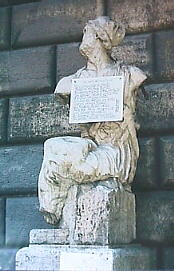HIST 308 09 Rome in the Renaissance–old
Rome as a Renaissance center
- financial support, large networks for humanists
- need for rebuilding after schism
- interest in religious scholarship
- reassertion of central authority after Schism,
Conciliar Movement
Our time period: from Nicholas V to “Sack of Rome”(1527)
Rome, its Campagna, the Papal States
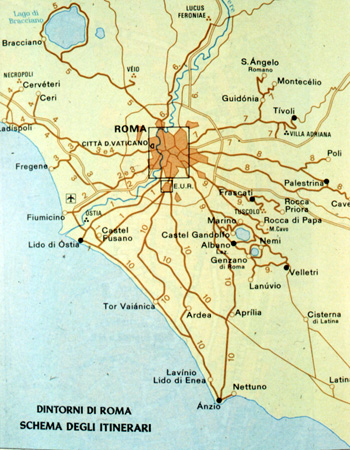
Campagna: lords from leading Roman, regional families
farming vs herding
relative underdevelopment
City within Aurelian Walls
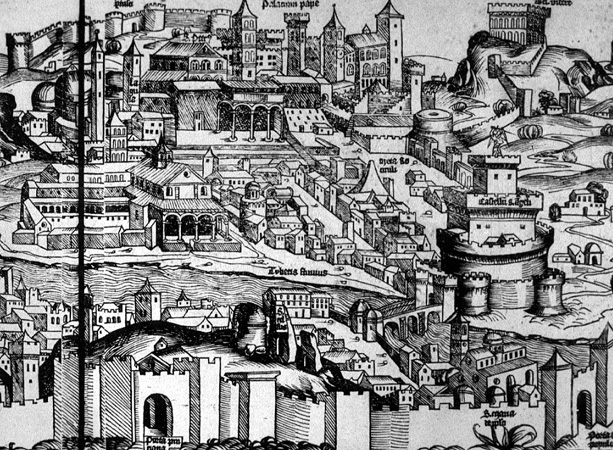
Schedel – De Temporis Mundi. Nuremberg 1493. View of Rome
Views of Rome from Vatican Library collections
disabitato
Clusters of buildings:
basilicas of Santa Maria Maggiore, St. John Lateran
Forum: Campo Vaccino; Tarpeian Rock: Monte Caprino
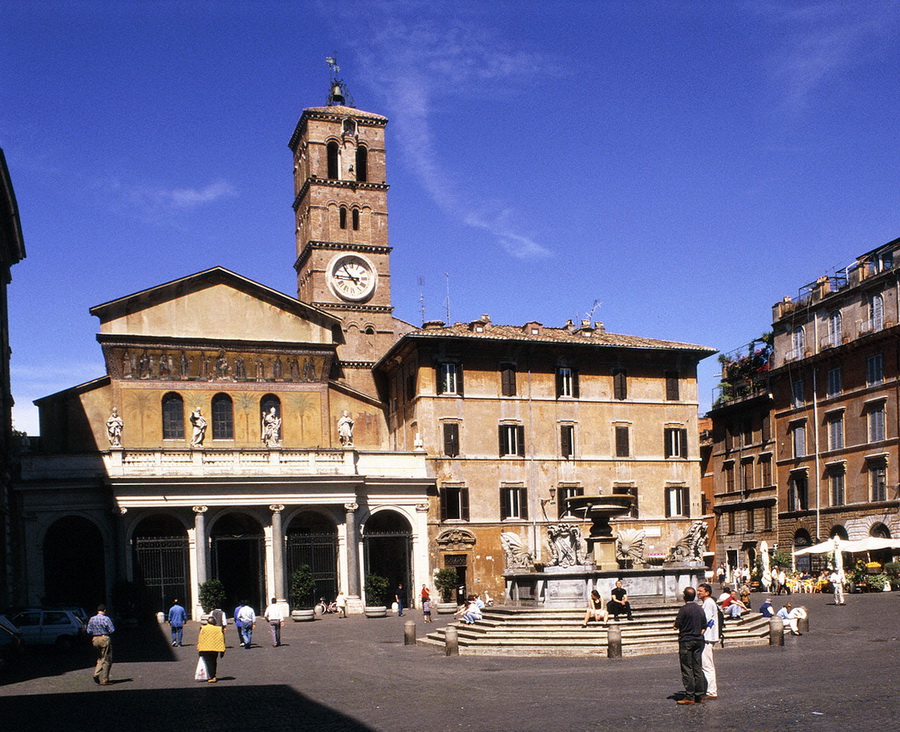
Trastevere: S. Maria in Trastevere
low infrastructure
Renaissance popes: modernizing city
administrative center for Church
respectable place for pilgrims
Old families
civic political structure moribund; replaced by papal bureaucracy
Papal States
taxation and revolts
solutions: nepotism
Ex: Alexander VI (b. Rodrigo Borgia ca. 1431; pope 1492-1503)
son Cesare: Cardinal; Duke of Romagna 1502. d. 1507
daughter Lucrezia
Papal elections: Italian focus
Popes as regional Italian Leaders (Lodi and after)
cultural patronage
Roman Renaissance
Collecting Ex: Nicholas V (1447-55)
expansion of Vatican library
Rome Reborn: Vatican Library exhibit at Library of Congress
Arenas for hiring, cultural patronage
Church as institution: humanists as notaries, secretaries, bureaucrats.
“Papal States” infrastructure
Private households of pope, other clerics, old Roman families
villa building
“learned leisure:” otium
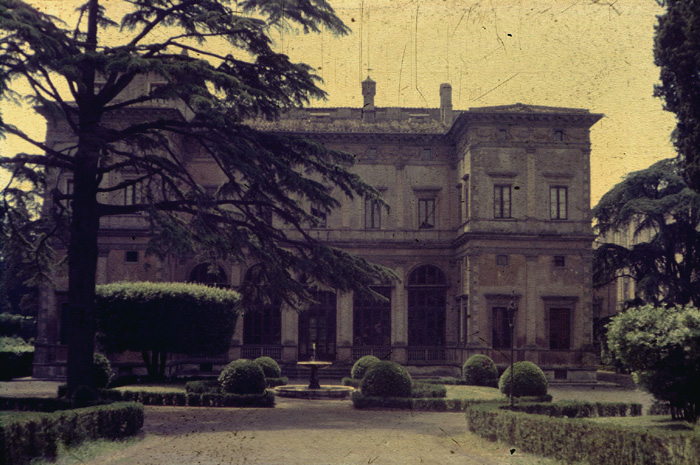
Villa Farnesina (1508-11), Peruzzi
university
arts; theology
Academies
Features of Roman humanist life
Latin
Ciceronian oratory
Latin poetry—our example: Brandolini
Life, work inter-relate
building and rebuilding
collecting antiquities; inscriptions; ancient architecture
statues
Augustan Age
Some examples at the papal level
Re-asserting traditional, central role of papacy in Europe
Crusade
moral, political arbitrator
interest in Portuguese, Spanish explorations.
ex: Treaty of Tordesillas 1494
expanded bureaucracy for better functioning
tension between Church bureaucratic functions, spiritual mission
Revivals and embellishing or traditional religious observance
“Roman stations”
Possesso
New papal residence: the Vatican
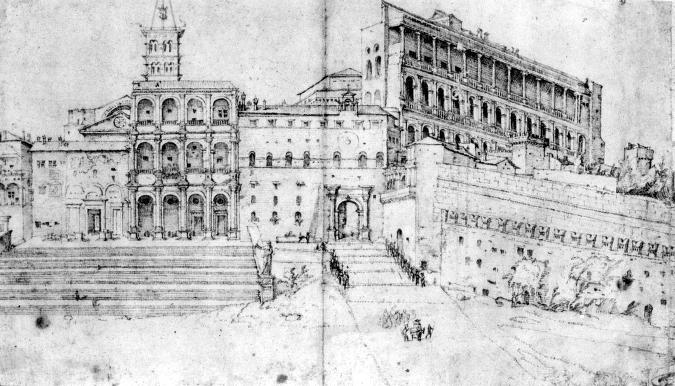
Heemskerck drawing: Old St. Peter’s and Vatican Palaces
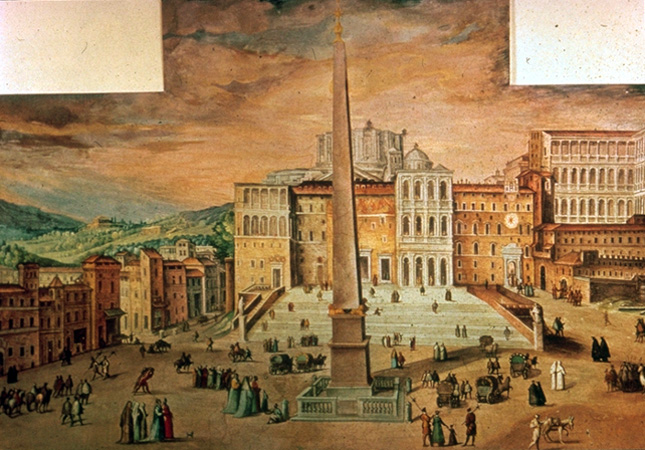
Piazza S. Pietro ca. 1588
Theology
- patristic revival
- rhetorical approach to studying the Bible
- humanist methods meet scholasticic theology
- Thomas Aquinas; natural law; church hierarchy; sacraments
Imagery: Peter; Moses
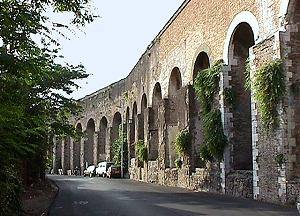
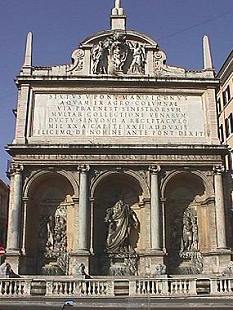 |
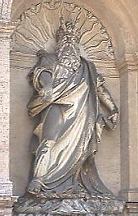 |
Ex: Acqua Felice, 1580s
Pasquino and pasquinate 1501
Popes
- Martin V (Oddone Colonna) 1417-31
- Eugenius IV (Gabriele Condulmer) 1431-47
- Nicholas V (Tommaso Parentucelli) 1447-55
- Callixtus III (Alfonso Borgia) 1455-58
- Pius II (Enea Silvio Piccolomini) 1448-64
- Paul II (Pietro Barbo) 1464-71
- Sixtus IV (Francesco dello Rovere) 1471-84
- Innocent VIII (Giovanni Battista Cibo) 1484-92
- Alexander VI (Rodrigo Borgia) 1494-1503
- Pius III (Francesco Todeschini Piccolomini) Sept-Oct 1503
- Julius II (Giuliano dello Rovere) 1503-13
- Leo X (Giovanni de’ Medici) 1513-22
- Hadrian VI (Adrian Florensz) 1522-23
- Clement VII (Giulio de’ Medici) 1523-34

